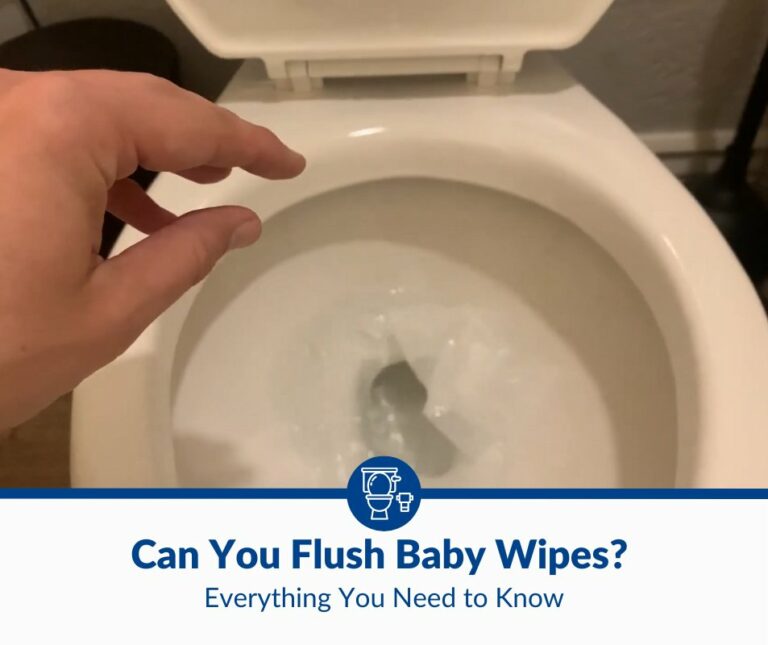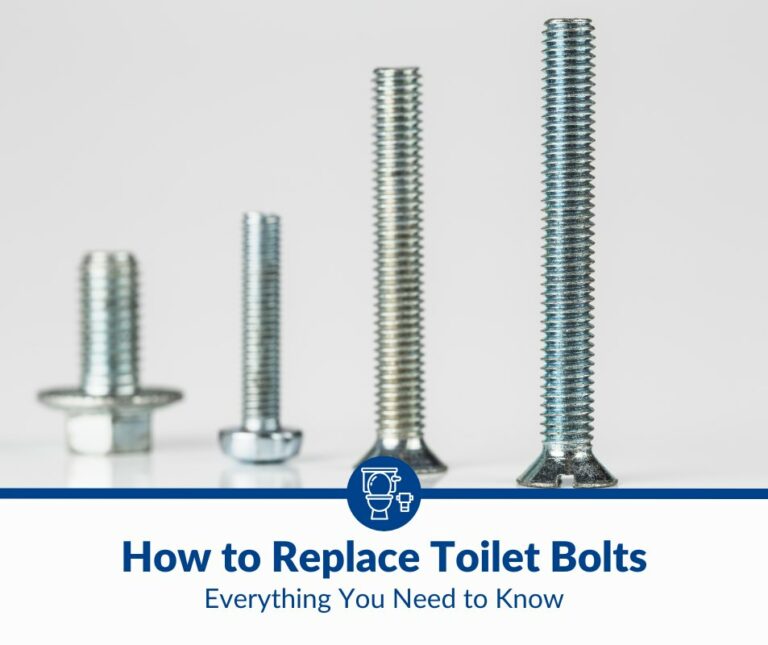How To Get Rid of Toilet Ring (7 Simple Ways)
Toilet rings are an annoying but common problem in many bathrooms. The discoloration caused by the ring can be unsightly and difficult to remove. Fortunately, there are several simple ways to get rid of the toilet ring without too much effort.
You can get rid of an unsightly toilet ring by scrubbing it with a toilet cleaner, using a pumice stone, trying a commercial toilet bowl cleaner, or using a toilet brush and disinfectant. You could also make your own cleaner or rent a power toilet cleaner to avoid getting your hands dirty.
Having a toilet ring can be a frustrating experience. These stubborn stains can be challenging to remove but regular cleaning is essential to help prevent stains from building up. Read on to learn more about how to make that unsightly stain vanish without too much effort.
1. Scrub With a Toilet Cleaner
An effective method for getting rid of a toilet ring is using a toilet cleaner and a scrub brush or pumice to scrub the stain away. Toilet cleaners are designed to help remove stubborn stains in toilets, including those that cause the unsightly ring in your toilet.
Materials needed:
- Toilet cleaner specifically designed to remove stains
- A scrub brush or pumice stone
- Gloves for protection
Below are the step-by-step instructions for scrubbing the inside of the toilet bowl:
- Wear gloves to protect your hands from the cleaner as well as the bacteria in the bowl.
- Turn off the water supply to your toilet and flush it.
- Use a cup or small bucket to scoop the remaining water from the bowl, and mop up the remaining water with a wad of paper towels.
- Shake or squirt the toilet cleaner around the bowl’s rim, covering the entire surface where the stain is present.
- Let the toilet cleaner work its magic on the stain by leaving it for at least an hour. If you can leave it overnight, even better. This will help loosen the stain, making it easier to remove later.
- Using a scrub brush or pumice stone, scrub the entire surface area of the bowl, paying extra attention to the stained area. Use firm and consistent pressure when scrubbing to loosen and remove the stain.
- Once you’ve finished scrubbing, flush the toilet to rinse away any remaining cleaner and debris.
- Repeat the process if the stain is stubborn.
Tips for Removing Tough Stains
There are various things you can do to increase the effectiveness of the above method when it comes to removing tough or stubborn stains:
- Try using a pumice stone, as it can be more effective at removing heavy buildup than a scrub brush.
- Apply additional cleaner and allow it to sit longer than recommended before scrubbing. This will give the cleaner more time to penetrate and loosen the stain.
- Add a cup of white vinegar and baking soda to the water in the bowl before scrubbing. This combination creates a powerful chemical reaction to help remove tough stains more effectively.
- If the stain still isn’t budging, try using a commercial toilet bowl cleaner designed to tackle tough stains. These products contain strong chemicals that can penetrate and dissolve the stain. However, remember to wear a face mask when using it, as the fumes can be potent.
2. Use a Pumice Stone
While it may seem strange to use a rock for cleaning, pumice stones effectively remove tough stains from toilet bowls. A pumice stone is highly abrasive and can easily scrub away even the toughest stains, leaving your toilet looking squeaky clean.
However, only use a wet pumice stone because a dry one can easily scratch the toilet bowl.
Materials:
- Pumice stone
- Gloves for protection
Here’s a step-by-step guide on using a pumice stone to scrub the toilet bowl:
- Wear gloves to protect your hands from the abrasive pumice stone and any bacteria in the bowl.
- Fill a bucket with warm water and submerge the pumice stone in it to soften it.
- Turn off the water supply to the toilet and flush it to empty the bowl.
- Use a cup or small bucket to scoop the remaining water from the bowl. If there’s any remaining water, mop it up with a wad of paper towels.
- Using the wet pumice stone, gently scrub the inside of the bowl, focusing on the areas with the most buildup.
- Once the toilet is clean, turn the water supply back on and flush the toilet to rinse away any remaining pumice stone particles and ensure the stains are entirely removed.
Tips for Maintaining the Pumice Stone and Using It Effectively
While a pumice stone is an excellent tool for removing toilet rings, it can be easily damaged if not used and stored properly. Additionally, the stone can only become effective if used correctly.
Here are a few tips for keeping your pumice stone in good shape and using it effectively:
- Rinse the pumice stone in the bucket of water periodically to keep it from becoming too abrasive.
- Use a circular motion while scrubbing to help loosen and remove the stains.
- Use caution when using the stone, as it can scratch some toilet bowls. It’s important to check the manufacturer’s instructions or consult a professional if you need clarification on the type of bowl you have.
- For best results, use the pumice stone regularly to prevent buildup and stains from forming in the first place.
- To maintain the pumice stone, rinse it off and let it dry completely before storing it in a dry place.
In addition to removing toilet rings, a pumice stone can also remove stains and buildup on other surfaces, such as tile and grout, sinks, and shower doors. It’s a versatile and eco-friendly cleaning tool that can save you time and money in the long run.
3. Try a Commercial Toilet Bowl Cleaner
If the above methods aren’t successful, then a commercial toilet bowl cleaner can effectively solve this problem. These products contain strong chemicals that can penetrate and dissolve the stain.
Several commercial cleaners are available, including tablets, liquids, and gels. Each type has its unique set of benefits and drawbacks:
Tablets
Toilet bowl cleaner tablets are a convenient and easy-to-use option. You drop them into the tank and allow them to dissolve gradually. The tablet gradually releases cleaning agents, and its effervescent action helps loosen dirt and grime.
Tablets prevent buildup and stains but may be less effective at removing heavy or stubborn stains.
Liquids
Liquid toilet bowl cleaners are highly effective at removing tough stains and buildup. They can be applied directly to the bowl and scrubbed with a brush or pumice stone for the best results. However, liquids can be messy and may require more elbow grease to get the job done.
Using a liquid cleaner can result in wastage due to the toilet bowl’s shape because it can be difficult to apply it to the vertical section, where most toilet rings are.
Gels
Toilet bowl cleaner gels are thicker than liquids and can be applied directly to the bowl. They are great for clinging to vertical surfaces, making them more effective at removing stains.
Most commercial toilet gels are easy to apply because they have an angled nozzle. This prevents you from touching the toilet bowl and allows for a more accurate application.
Step-by-Step Instructions for using a commercial cleaner:
- Shut off your toilet’s water supply. Flush the toilet to eliminate the water, and scoop or mop out any remaining water.
- Apply the commercial toilet cleaner according to the manufacturer’s instructions, paying extra attention to the areas with the most buildup.
- Scrub the inside of the bowl with a toilet brush, and get the cleaner into all the nooks and crannies.
- Let the cleaner sit for the recommended time, usually around 10-15 minutes.
- Once the cleaner has had time to work, scrub the bowl once more with the toilet brush, applying extra pressure to stubborn areas
- Turn the water supply back on and flush the toilet to remove the cleaner and any debris.
- Check for any remaining stains and repeat the process as needed until the ring is gone.
- Once the toilet is clean, flush it to ensure the water runs clear, and the stains are removed.
Tips for Choosing the Best Product for Your Needs
- Check the label for the active ingredients and consider the type of stains you’re dealing with. Some products are better for heavy stains, while others are better for preventing buildup. Products with bleach can leave your toilet looking bright and stain-free.
- Look for a product with a pleasant scent, as the strong chemical smell of some commercial cleaners can be overwhelming.
- Choose a product that is safe for your toilet bowl’s material.
- Consider the environmental impact of the product. Some products are more eco-friendly than others.
4. Make Your Own Toilet Bowl Cleaner
Homemade cleaners can be just as effective as commercial products, providing the added benefit of being more natural and eco-friendly. Several recipes for homemade cleaners can be made using household ingredients, such as vinegar and baking soda.
If you opt for a homemade toilet bowl cleaner, the chances are you already have the ingredients in your kitchen. The ingredients you need are inexpensive and widely available at grocery stores, online, and more.
Here are some popular recipes for homemade toilet bowl cleaners:
- Vinegar and baking soda: Vinegar is a natural cleaning agent, and baking soda is a mild but gentle abrasive that can help scrub tough stains. Mix one cup of vinegar with one-quarter cup of baking soda, and there’s your homemade cleaner!
- Lemon juice and baking soda: Lemon juice is a natural bleaching agent, making it ideal for lightening up tough stains and perfect if you want to avoid chlorine bleach. Mix a quarter cup of lemon juice with half a cup of baking soda to make a paste-like cleaner that can be applied directly to the bowl.
- Borax and vinegar: Borax is a natural mineral powder that makes an excellent general-purpose household cleaner. Mix half a cup of borax with one cup of vinegar to create a bubbling solution that can effectively loosen and remove tough stains.
Step-by-step Instructions on how to use your homemade cleaner:
- Turn off the water supply to the toilet and flush it to empty the bowl.
- Remove the remaining water with a cup or small bucket, and mop the remaining water with a wad of paper towels or toilet paper.
- Choose the recipe from the list above that best suits your needs and mix the ingredients together.
- Pour the solution into the bowl until it reaches the water line, and spread it around it using a brush or rag.
- Let the cleaner sit for at least 15-30 minutes. If your toilet ring is severe, consider leaving the cleaning solution overnight.
- Scrub the inside of the bowl with a toilet brush, ensuring you get the cleaner into all the nooks and crannies.
- Flush the toilet to remove the cleaner and any debris.
- Turn the water supply back on and check for any remaining stains.
- Repeat the process as needed until the ring is gone.
- Once the toilet is clean, flush it again to ensure the water runs clear and the stains are entirely removed.
Tips for Choosing the Best Recipe for Your Needs
- Consider the type of stains you’re dealing with and select the recipe that best suits your needs.
- If you’re on a budget, consider the ingredients you already have in your kitchen.
- Keep in mind that some ingredients may not be suitable for certain types of toilet bowls.
- Be mindful of the smell of the ingredients you’re using. Some natural ingredients may have a more pungent smell than others.
- Be careful with abrasive ingredients, as they can scratch some toilet bowls.
5. Use a Toilet Brush and Disinfectant
The combination of scrubbing and disinfecting can effectively remove stains and prevent the growth of harmful bacteria in the toilet bowl. This method is best for tougher stains that aren’t responding to other cleaning agents.
Here are the materials you’ll need to start:
- Toilet brush
- Disinfectant
Popular toilet disinfectants include powerful ingredients, such as the following:
- Chlorine bleach
- Hydrogen peroxide
- Hydrochloric acid
- Ammonia
Step-by-step instructions for scrubbing the bowl with a brush and disinfectant:
- Start by pouring a sufficient amount of the disinfectant into the toilet bowl and let it sit for a few minutes according to the manufacturer’s instructions.
- Use the toilet brush to scrub the inside of the bowl, paying extra attention to the areas with the most buildup.
- Apply extra pressure to the tough stains while using a circular motion to get the brush into all the nooks and crannies.
- Once the brush is used, give it a good rinse and let it air dry.
- Flush the toilet to remove the disinfectant and any debris.
- Check for any remaining stains and repeat the process as needed until the ring is gone.
- Once the toilet is cleaned, flush it once more to ensure the water runs clear and the stains are entirely removed.
Tips for Maintaining the Toilet Brush and Preventing Future Stains
- Use a toilet brush designed for cleaning toilets, as some brushes may be too harsh and scratch the bowl. Other brushes may be ineffective at tackling toilet grime.
- Use a toilet brush holder. A toilet brush holder can keep the brush clean and dry, prolonging its life and improving its cleaning performance.
- Use a disinfectant that is safe for use in toilets and appropriate for the type of stains you’re dealing with.
- Let the brush air dry after use and store it in a dry place. Leaving the brush in a dark and moist place can promote bacterial growth.
- Replace the toilet brush regularly to ensure it’s still effective at removing tough stains. Luckily, toilet brushes are very inexpensive and widely available.
- Let the cleaner sit for at least 15 minutes before scrubbing the bowl. This will allow the cleaner to penetrate and loosen any stubborn dirt or grime, making it easier to remove with the brush.
- Regularly check the water hardness of your area and use a water softener if necessary. You might also consider using a toilet cleaner designed for hard water. Hard water can cause a mineral buildup in the toilet bowl.
6. Try a Pumice Stone With a Handle
We’ve already discussed using a pumice stone but have you ever tried one with a handle? Can you imagine how much easier it would be to scrub those tough stains if your pumice stone had a handle? Well, this method is definitely worth trying.
A pumice stone with a handle makes it easy to grip and control while scrubbing the inside of the bowl, making it even more effective in removing stubborn stains.
Here are the materials you’ll need to get started:
- Pumice stone with handle
- Gloves
Step-by-step instructions for using the pumice stone with a handle:
- Begin by turning off the water supply to the toilet by closing the valve behind the toilet or turning off the main water supply to the house. This will prevent water from entering the bowl while you are cleaning.
- Put on your rubber gloves to protect your skin from any bacteria.
- Flush the toilet to empty the bowl and remove any remaining water. Removing any remaining water in the bowl will give you enough room to work, and the pumice stone will also work better when the bowl is dry.
- Wet the pumice stone and let it sit in the water for a few minutes to allow it to soften and become more porous.
- Grab the handle of the pumice stone and start scrubbing the inside of the bowl in circular motions. Start from the bottom and work your way up.
- Apply extra pressure to the more challenging areas, but don’t use too much pressure as this can scratch the inside of the bowl. Pumice stone is abrasive enough to remove the ring but gentle enough not to damage the porcelain of the toilet bowl.
- Continue to scrub the ring until it is removed. Be sure to check the entire circumference of the bowl, as rings can form in different areas.
- Turn the water supply back on and flush the toilet to rinse any remaining debris.
Tips for Maintaining the Pumice Stone and Using It Effectively.
- Always wet the stone before using it to prevent it from scratching the porcelain.
- Use moderate pressure when scrubbing to avoid damaging the bowl.
- If the ring is particularly stubborn, you may need to repeat the process several times.
- After each use, rinse the stone thoroughly and allow it to dry completely before storing it.
- Avoid storing the stone in a damp area to prevent it from becoming soft and ineffective.
7. Rent or Hire a Power Toilet Cleaner
Finally, if none of the above methods successfully eliminates your stubborn toilet ring, you may need a more intense method. In that case, consider renting a power toilet cleaner. These machines are specifically designed to remove stubborn stains and grime from the inside of a toilet bowl, making them ideal for removing tough toilet rings.
There are several types of power toilet cleaners available, including:
- Hydro jet cleaners: These cleaners use high-pressure water to blast away stains and buildup. They are highly effective but can be messy to use.
- Spinning brush cleaners: These cleaners use a spinning brush to scrub away stains and buildup. They are not as messy as hydro jet cleaners but may be less effective at removing tough stains.
Step-by-step instructions for using a power toilet cleaner:
- Begin by turning off the water supply to the toilet by closing the valve behind the toilet or turning off the main water supply to the house. This will prevent water from entering the bowl while you’re cleaning.
- Flush the toilet to empty the bowl.
- Follow the manufacturer’s instructions to assemble the power toilet cleaner.
- Insert the cleaner into the bowl and turn it on.
- Use the cleaner to scrub the inside of the bowl, paying particular attention to the ring.
- Use the cleaner according to the manufacturer’s instructions, moving it around the bowl to ensure all areas are cleaned.
- Turn off the cleaner and remove it from the bowl.
- Turn the water supply back on and flush the toilet to rinse any remaining debris.
Tips for Choosing the Best Power Toilet Cleaner for Your Needs
- Consider the type of stains and buildup you need to remove. Hydro jet cleaners are highly effective but can be messy, and you’ll need plenty of towels on your bathroom floor to absorb the water. In contrast, spinning brush cleaners are less messy but may be less effective at removing tough stains.
- Read reviews and compare features of different models to find the best one for your needs.
- Choose a cleaner with a long hose and handle. This will allow you to reach all areas of the toilet bowl easily.
- Look for a cleaner with an adjustable pressure setting. This will allow you to use the appropriate pressure for the type of stains and buildup you need to remove.
- Check that the cleaner is easy to assemble and use. This will make the cleaning process faster and easier.
- Ensure that the cleaner comes with all necessary accessories, such as brushes and nozzles.
- Check that the cleaner has a warranty or guarantee for peace of mind.
Preventing Future Toilet Rings
Keeping your toilet clean and fresh can be challenging, but regular cleaning and maintenance can prevent the buildup of stains and keep your toilet looking like new.
Here are some tips for regularly cleaning and maintaining your toilet to prevent the buildup of stains:
- Clean your toilet weekly. Scrub the inside of the bowl with a toilet brush and toilet cleaner at least once a week to remove any stains or buildup before they become too difficult to remove.
- Use a toilet bowl cleaner. Toilet bowl cleaners contain powerful cleaning agents that help to remove stains and buildup. Use a cleaner specifically designed for toilets and follow the manufacturer’s instructions for the best results.
- Apply bleach to the toilet bowl after cleaning. After cleaning your toilet, place some thick bleach into the bowl, and leave it for at least an hour. Chlorine bleach helps disinfect toilets and also makes it look bright and hygienic.
- Pour white vinegar into the bowl. Vinegar prevents the buildup of stains and helps to keep the bowl sparkling clean. Pour a cup of white vinegar into the toilet bowl once a month and allow it to sit overnight, then scrub the bowl with a toilet brush in the morning.
- Clean the tank at least once a year. The tank is often neglected when cleaning the toilet, but it can be a source of bacteria and other contaminants that cause unpleasant odors and stains. Clean the tank with an all-purpose cleaner at least once a year to keep it clean and fresh.
- Install a water-saving toilet. Water-saving toilets use less water than standard toilets, which can help reduce mineral stains if you live in an area with hard water.
- Coat the bowl with wax. Wax helps prevent the buildup of stains and is easy to apply. Apply a coat of polymer-based car wax around the top of the bowl and buff it to a shine with a soft cloth. Re-apply the wax once every few months for the best results.
- Use non-corrosive tank tablets. Non-corrosive tank tablets contain chlorine and help to keep the bowl clean and free from stains. Place a tablet in the toilet tank once a month, and it will slowly dissolve and help to keep the bowl clean.
- Install a water softener. Installing a water softener will help to reduce the number of minerals in your water, which can help to prevent stains and buildup.
Conclusion
Getting rid of a stubborn toilet ring can be a challenge. Fortunately, there are simple steps to remove it and prevent future buildup. Scrubbing your toilet with a cleaner, using a pumice stone, trying a commercial cleaner, using a toilet brush and disinfectant, trying a pumice stone with a handle, or renting a power toilet cleaner are all effective methods. You can also make your own cleaner if you prefer a natural solution.
Regular cleaning can help prevent future stains and keep your toilet fresh and hygienic. Following the tips above, you can keep your toilet free from stubborn rings.







